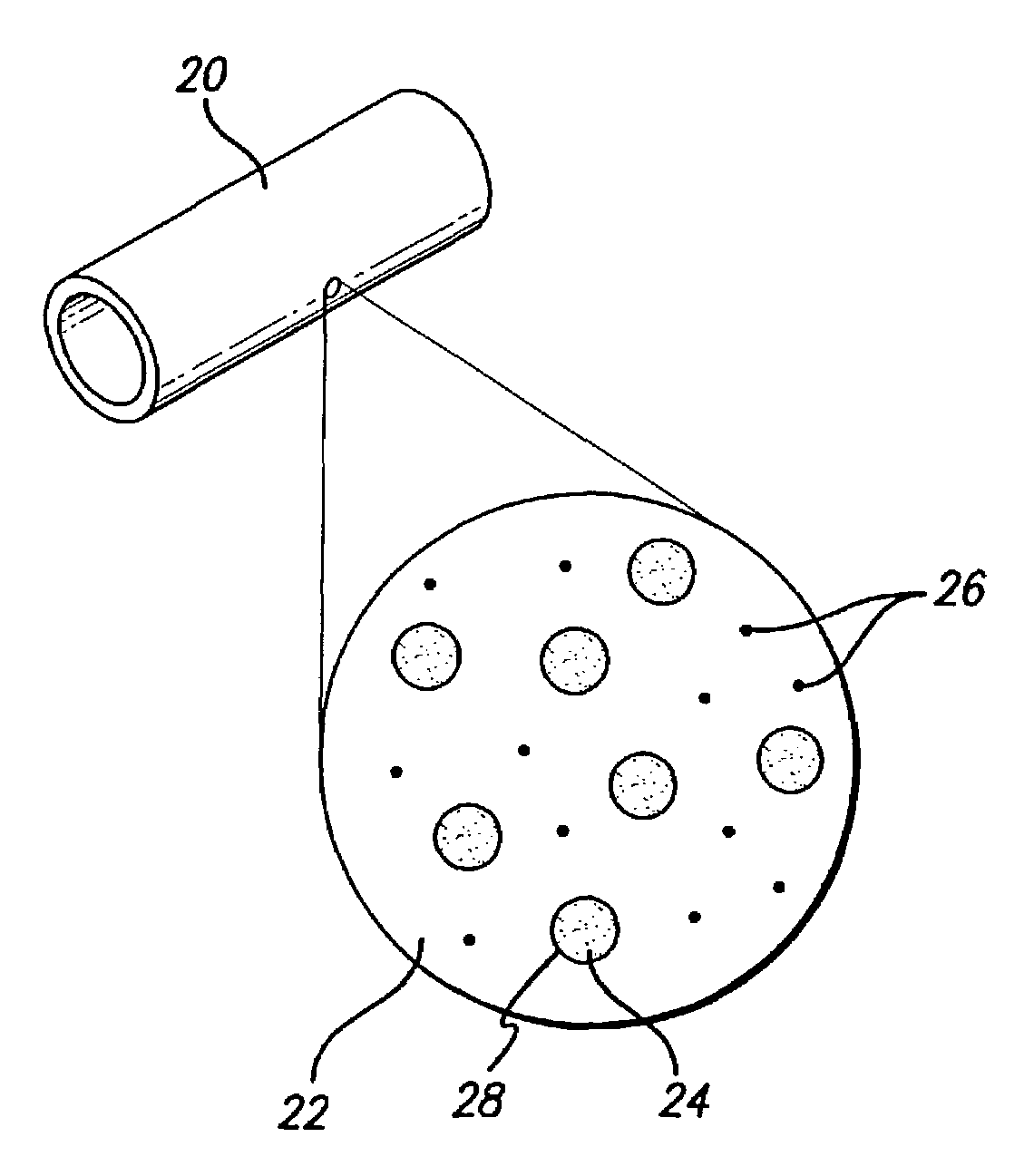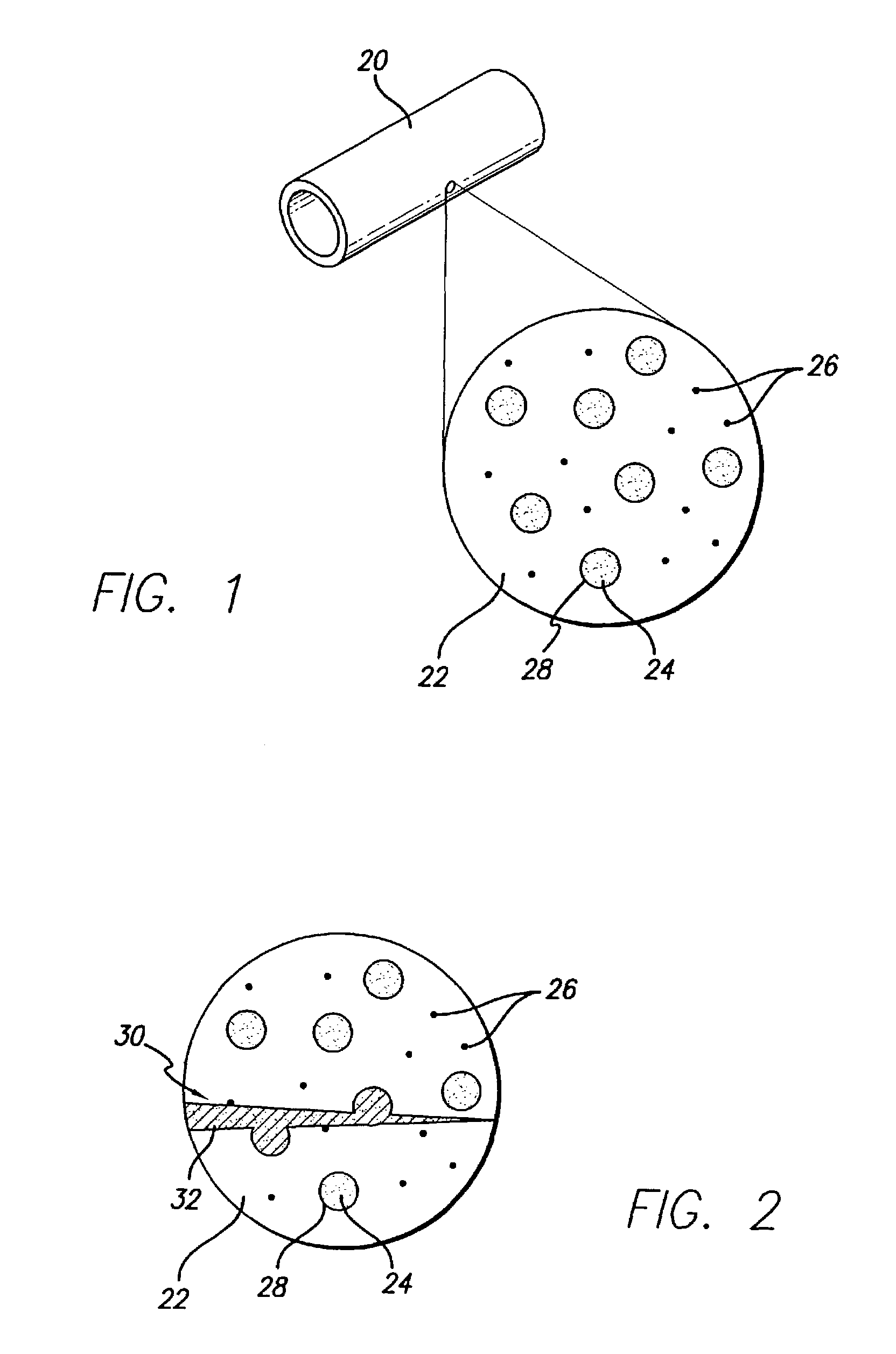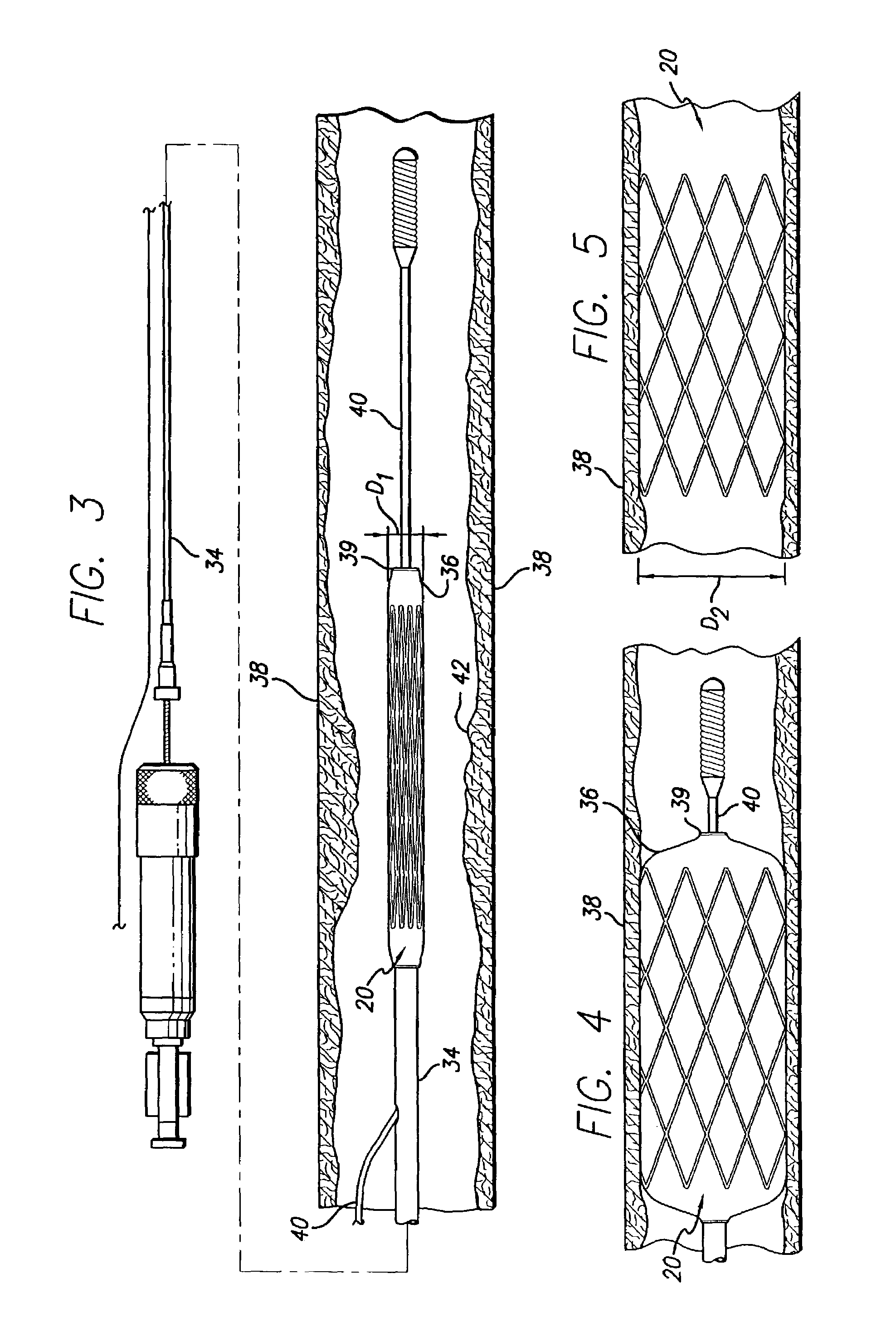Medical device made from self-stiffening composite
a composite and medical device technology, applied in the field of medical devices, can solve the problems of stent recoil, stent recoil, stent recoil, etc., and achieve the effect of sufficient radial strength and efficient stiffening
- Summary
- Abstract
- Description
- Claims
- Application Information
AI Technical Summary
Benefits of technology
Problems solved by technology
Method used
Image
Examples
Embodiment Construction
[0024]The present invention provides a medical device that is flexible in an initial configuration, yet is self-stiffening when placed in an activated configuration. The medical device of the present invention may take many forms, including, but not limited to, stents, vascular grafts, wound closures, embolic protection devices, graft attachment systems, anastomosis clips and other tube or wire implants. While a wide range of medical devices will benefit from the present invention, the invention as applied to implantable intraluminal devices, such as stents and vascular grafts, is described herein as only an example and is not meant to be limiting.
[0025]Referring now to the figures with more particularity, the present invention includes a medical device, and in particular a stent 20, having a tubular body formed of a base material 22, a polymerizer 24 and a corresponding activator 26 for the polymerizer 24. In an initial configuration, as shown in FIG. 1, the polymerizer 24 and acti...
PUM
 Login to View More
Login to View More Abstract
Description
Claims
Application Information
 Login to View More
Login to View More - R&D
- Intellectual Property
- Life Sciences
- Materials
- Tech Scout
- Unparalleled Data Quality
- Higher Quality Content
- 60% Fewer Hallucinations
Browse by: Latest US Patents, China's latest patents, Technical Efficacy Thesaurus, Application Domain, Technology Topic, Popular Technical Reports.
© 2025 PatSnap. All rights reserved.Legal|Privacy policy|Modern Slavery Act Transparency Statement|Sitemap|About US| Contact US: help@patsnap.com



